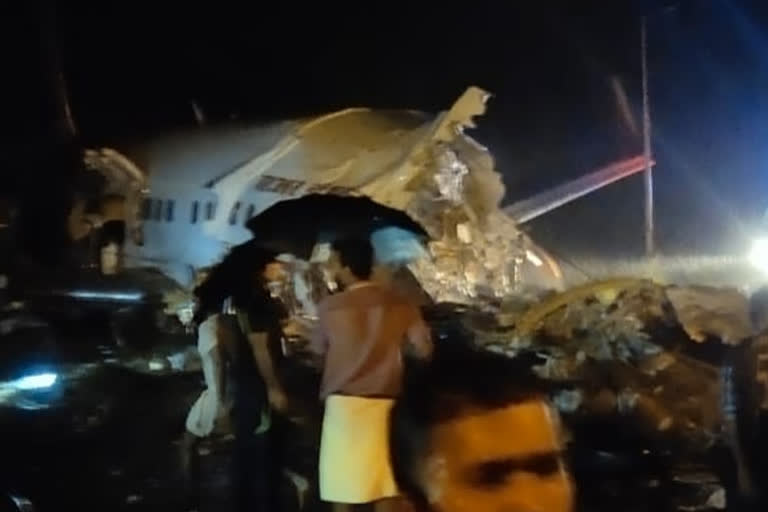New Delhi: Back in 2010, an Air India Express aircraft overshot the runway at Mangalore airport, fell into a gorge, caught fire and 158 people lost their lives. And the crash of the airline's plane in Kozhikode on Friday is a stark reminder of that accident ten years ago.
In both instances, Air India Express pilots had overshot tabletop runways. Also, the flights were coming from Dubai.
In its report on the Mangalore accident that happened on May 22, 2010, the Court of Inquiry had said the direct cause was the captain's failure to discontinue the unstabilised approach of the plane.
"Despite the constraints of terrain surrounding the tabletop runway, the rescue and fire fighting operations had been carried out with due diligence," the report dated October 31, 2010 said.
As per the report, Air India Express's Boeing 737-800 aircraft overran the runway, including the strip and the RESA (Runway End Safety Area).
Also read: Before crash-landing, AI pilots aborted two landings due to tailwind
"It then impacted the concrete mounting structure of ILS (Instrument Landing System) Localiser Antenna and fell into a gorge. In the resultant impact and post crash fire, 152 passengers and all 6 crew members lost their lives. There were 8 survivors," the report said.
On Friday, the airline's plane overshot the runway at Kozhikode airport, fell into a slope before breaking into two pieces. While there was no fire, at least 18 people, including two pilots, are dead in the crash, which also happened when there were rains.
Tabletop runways are constructed in a hilly or an elevated terrain.
The 2010 report had said that there were three tabletop airports in the country from where scheduled flights operate at Mangalore, Kozhikode and Lengpui.
"Because of the undulating terrain and constraints of space, these airfields require extra skill and caution while carrying out flight operations.
"The hazard of undershooting and overshooting, in particular, can lead to grave situations, as was the case in this accident," the report said.
Further, the report also said that tabletop runways have a problem of access roads around the airfield, which may need to be used in case of aircraft accidents.
Citing the International Civil Aviation Organization (ICAO) data, the report had also said that most of the accidents occur during landing and take-off phases, with a large number of runway excursions and aircraft overrunning into the overshoot area.
"Considering the large momentum of these aircraft, a downward slope in the overrun area can worsen the outcome. It is therefore recommended that such downward slopes as obtaining in Mangalore be brought to the same level of the runway surface.
"This also needs to be ensured at all tabletop airports in the country," the report said.
Also read: Pilot of crashed AI Express flight earlier flew MiG-21s in IAF
The Court of Inquiry had said the cause of the accident was the captain's failure to discontinue the "unstabilised approach" and his persistence in continuing with the landing, despite three calls from the first officer to "go around" and a number of warnings from Enhanced Ground Proximity Warning System (EGPWS).
This was mentioned as the direct cause of the accident.
At the time of Mangalore crash, there was no Aircraft Accident Investigation Bureau (AAIB), which was set up only in 2012.
The AAIB is probing the Kozhikode accident.
PTI



